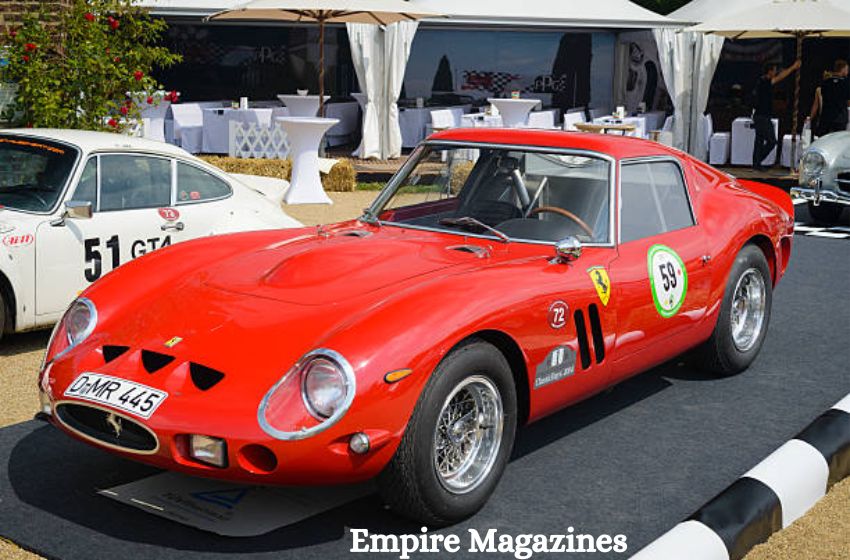When people think of luxury cars, Ferrari’s iconic design often comes to mind. Sleek, aerodynamic, and fast, Ferraris have become the epitome of high-end vehicles. However, when it comes to affordable cars, it’s easy to see that their designs differ vastly from Ferraris. But why dont cheap cars look like Ferraris? In this article, we will delve into the factors that separate the design and appearance of budget-friendly vehicles from luxury cars like Ferraris, including costs, functionality, and branding.
The Role of Cost in Car Design
One of the primary reasons why cheap cars don’t look like Ferraris is due to the cost of production. High-end vehicles like Ferraris are constructed from premium materials such as carbon fiber, aluminum, and advanced composites. These materials help keep the car lightweight while maintaining structural strength and contribute to its sleek and unique design. However, these materials are expensive, making it impractical for manufacturers of cheaper cars to use them.
In contrast, affordable cars use materials like steel and plastic, which are more economical but limit design flexibility. Additionally, the complex body shapes and aerodynamic forms found in Ferraris require sophisticated tooling and labor-intensive processes to achieve. For cheaper cars, minimizing production costs is essential to keeping the vehicle within an affordable price range As a result, cheaper cars tend to have simpler designs.
Functionality Over Aesthetics
Another factor contributing to why cheap cars don’t look like Ferraris is the different priorities in their design. Ferraris are performance-oriented cars built for speed, handling, and aesthetics. On the other hand, affordable cars are typically designed for everyday functionality. Consumers of budget-friendly cars are often more concerned with aspects such as fuel efficiency, safety, interior space, and affordability rather than the sleek aesthetics found in Ferraris.
For example, the aerodynamics of a Ferrari is designed to minimize drag at high speeds, but for everyday driving, a streamlined design is not as essential. Inexpensive cars prioritize practical elements like cargo space, comfort, and visibility, which leads to a more boxy or utilitarian design. These design choices allow manufacturers to produce a vehicle that meets the needs of the average driver without the added costs of luxury design elements.
Brand Positioning and Market Appeal
Branding plays a significant role in why cheap cars don’t look like Ferraris. Ferrari is a luxury brand that markets its vehicles as high-end, exclusive, and performance-driven. The brand’s signature design—low-slung, curvaceous, and aggressive—helps maintain its image as a top-tier luxury car maker. Buyers of Ferraris are not just purchasing a vehicle; they are investing in a symbol of status and prestige.
On the other hand, brands that produce affordable cars aim to appeal to a broader market. Their goal is to sell cars that are accessible to the masses. Bold and exotic designs like those found on Ferraris may not resonate with their target audience, which includes practical-minded consumers who prioritize reliability over looks. As a result, manufacturers of cheap cars opt for more neutral, functional designs that appeal to a wider range of people.
Material and Engineering Constraints
The materials used in the construction of Ferraris versus those in affordable cars further explain why cheap cars don’t look like Ferraris. As mentioned earlier, Ferraris use advanced materials like carbon fiber and aluminum, which allow for complex and intricate designs. These materials are lightweight yet strong, which is essential for both performance and design.
In contrast, budget-friendly cars use less expensive, heavier materials like steel and plastic. These materials are not as flexible in terms of shaping, which restricts the design possibilities for affordable cars. Additionally, the engineering that goes into Ferraris is far more advanced. The aerodynamic curves and aggressive lines that define Ferrari’s appearance are the result of intensive engineering focused on speed and performance. For affordable cars, simpler engineering keeps costs down, but this also limits the complexity and visual appeal of the design.
Marketing Influence on Design Choices
Another reason why cheap cars don’t look like Ferraris is rooted in marketing. Ferraris are marketed as luxury items that offer an unparalleled driving experience. Their design reflects this, emphasizing beauty, speed, and status. The people who buy Ferraris do so because they want to own something unique, and the bold design is a key selling point.
Affordable cars, however, are marketed differently. Their campaigns highlight reliability, fuel efficiency, and affordability. For these cars, the design is less of a selling point, and as a result, manufacturers focus on practical elements over appearance. Buyers of cheap cars are looking for functionality and value rather than bold design, which is why the aesthetics are more subdued and less flashy than Ferraris.
Case Study: The Mazda Miata
There are exceptions to the rule, such as the Mazda Miata, which is a relatively affordable car with a sporty design. The Miata has managed to capture some of the same spirit as more expensive cars at a fraction of the cost. However, even the Miata doesn’t quite reach the level of luxury or performance associated with Ferraris.
The Miata’s success shows that it’s possible to create a sporty, affordable car, but it still highlights the challenges of matching Ferrari’s aesthetics without significantly raising the price. Over the years, the price of the Miata has increased, and even though it offers sporty design, it still doesn’t match the luxury or engineering of a Ferrari.
Conclusion: Why Don’t Cheap Cars Look Like Ferraris?
In conclusion, the reasons why cheap cars don’t look like Ferraris come down to cost, functionality, brand positioning, and material limitations. While it’s possible to make affordable cars with a sporty design, the intricate engineering and expensive materials that go into making Ferraris simply aren’t feasible for budget-friendly vehicles. Ferraris are built for performance, luxury, and exclusivity, while affordable cars are designed for practicality, reliability, and mass appeal.

